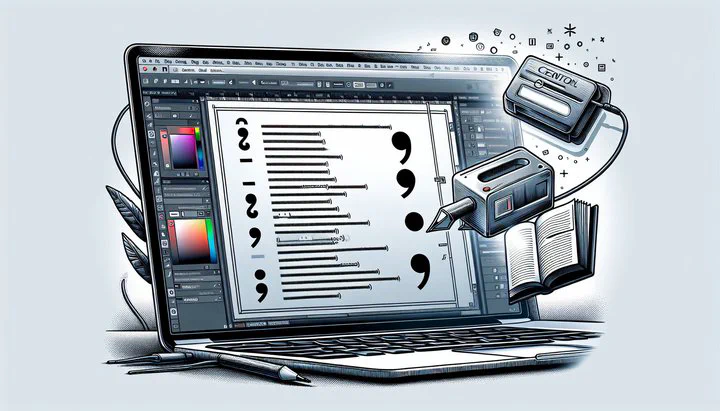Change Colons to Semicolons in InDesign

Introduction to Punctuation Changes in InDesign
Welcome to InDesign! It’s a versatile tool for design and text editing. Sometimes, you need to change colons to semicolons. This might be important for big projects or special styles. Even small changes can make a big difference!
In many design projects, punctuation matters as much as the font or layout. If you’re working on a large document, like a book or a magazine, knowing how to replace colons with semicolons in InDesign can be a lifesaver. Let’s explore how to efficiently change colons to semicolons in InDesign without losing your mind! In the following sections, we’ll explore both manual and automated methods to help you master this task.
Manual Replacement Techniques
When working on smaller projects or if you need to make precise edits, manually changing colons to semicolons in InDesign can be a straightforward choice. Follow these steps to do this efficiently:
- Open your document.
- Go to the Edit menu.
- Click Find/Change.
- In Find what, type
:. - In Change to, type
;.
Before you click Change All, review each replacement to ensure it fits the context. Select Find Next to find each colon, then click Change for individual replacements. This helps maintain the integrity of your text.
For added precision, use InDesign’s Find Format Settings to specify text styles or other attributes. This ensures you’re only changing colons to semicolons in the sections that truly need it. Manual replacement is ideal for small projects, but for larger documents, consider automating punctuation changes in InDesign documents, which we’ll cover next.
Automating Punctuation Changes with GREP
For large projects in InDesign, automating punctuation changes can save you a lot of time. This is where GREP comes in handy. Using GREP to change punctuation in InDesign is perfect for tasks like changing colons to semicolons in InDesign documents.
To get started:
- Open the Find/Change dialog in the Edit menu.
- Switch to the GREP tab.
- In Find what, enter
:. - In Change to, enter
;.
GREP handles complex patterns and large amounts of text efficiently. It can be customized to only target colons in certain text styles, ensuring changes are accurate and contextually appropriate.
Using GREP to change punctuation in InDesign is fast and reduces the chance of human error. It’s a great tool for designers managing large projects, like books or magazines, where consistency is key. If you’re new to GREP, don’t worry! With practice, it becomes an invaluable tool. Next, we’ll dive into strategies for efficiently editing punctuation in large InDesign projects.
Efficient Workflow Management for Large Projects
Handling large projects in InDesign can be daunting, especially when it comes to editing punctuation consistently across hundreds of pages. But don’t worry! With a few smart strategies, you can efficiently edit punctuation in large InDesign projects.
- Use styles: Maintain consistent formatting with paragraph and character styles. Changes in styles update all text with that style. This ensures uniformity when you need to change colons to semicolons in InDesign.
- Master pages: For repeating elements like headers or footers, master pages allow edits in one place that reflect on every page using that master. This saves time compared to editing each page individually.
- Workflow checklist: Create a checklist with steps like setting up GREP queries, checking styles, and using master pages. This minimizes the risk of missing details and ensures intentional and accurate punctuation changes.
- Preflight panel: Use InDesign’s preflight panel to check your document for errors before finalizing it. It’s helpful for spotting inconsistencies in punctuation or formatting.
By incorporating these techniques, you can automate many tedious aspects of punctuation editing. This not only saves time but also reduces the potential for errors, allowing you to focus on creativity.
Conclusion and Additional Resources
Great job! You now know how to change colons to semicolons in InDesign. Whether you’re working on a small flyer or a hefty book, knowing how to efficiently edit punctuation can make a significant difference in your workflow. We’ve covered manual techniques, explored the power of GREP for automation, and shared strategies for managing large projects with ease.
But the journey doesn’t end here. Design is about continuous learning and improvement. Visit DesignResolve.com for more tips and tricks. Join design communities like the Adobe subreddit or GraphicDesigning subreddit to connect with fellow designers, share experiences, and learn more.
Each project is an opportunity to learn and grow. Keep experimenting, stay inspired, and continue honing your craft. Your dedication to improving your design skills will not only enhance your work but also contribute to a thriving design community. Happy designing!